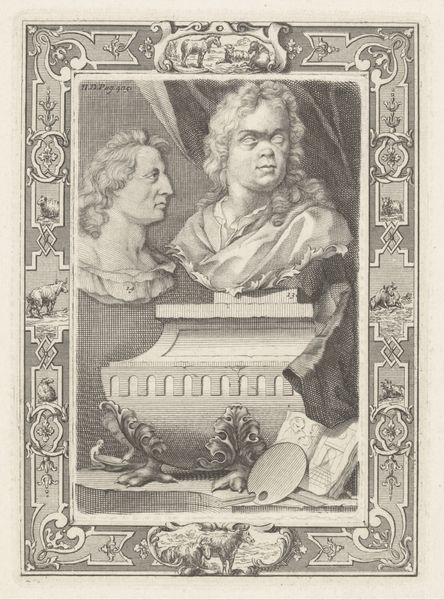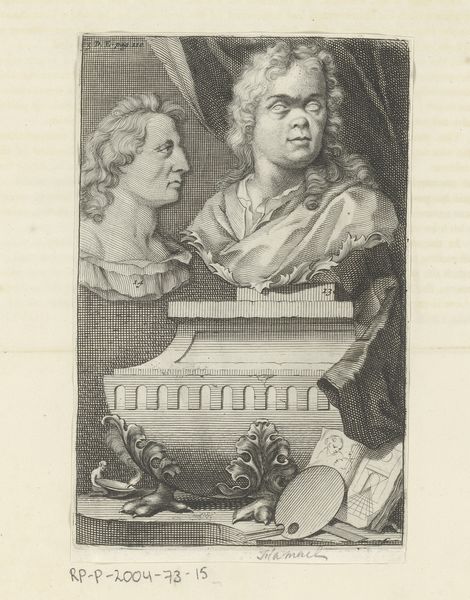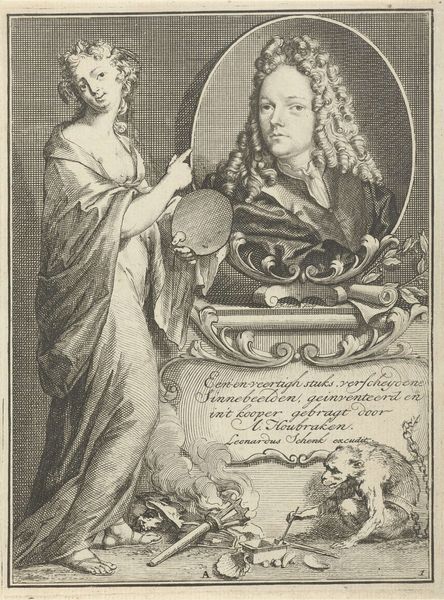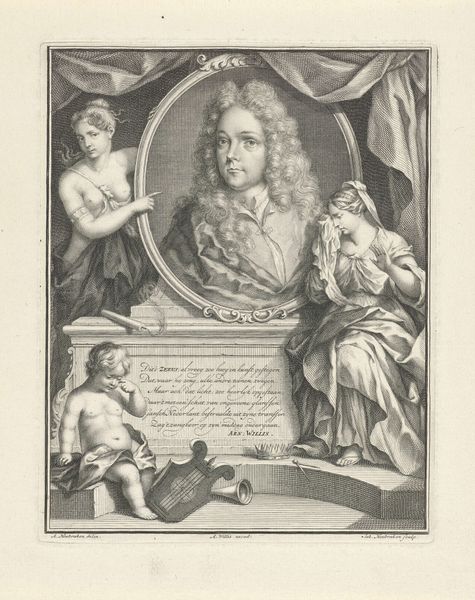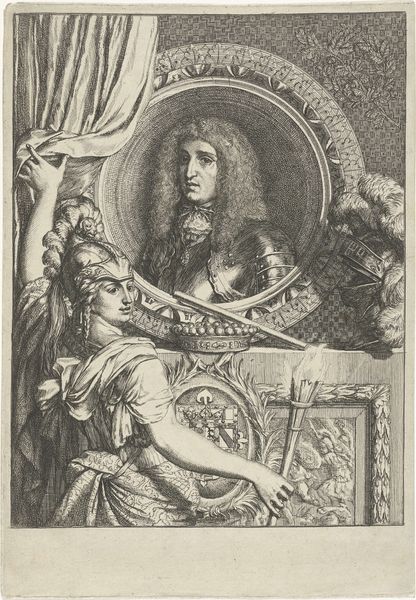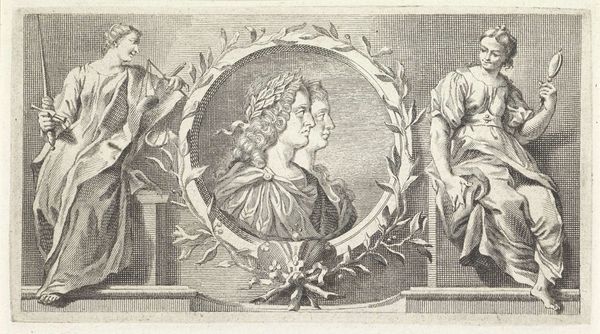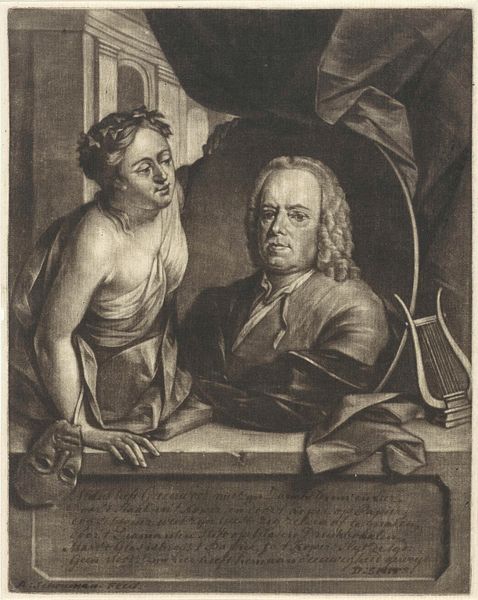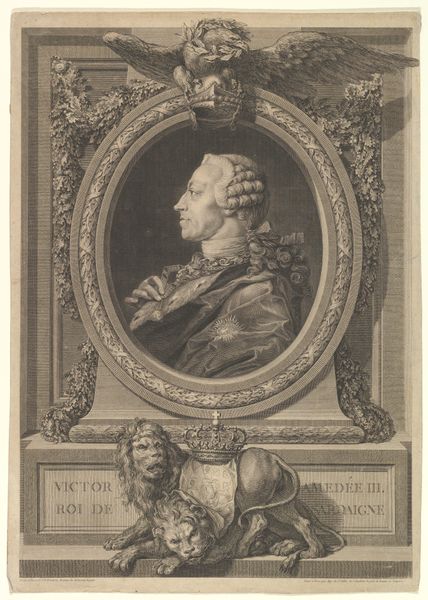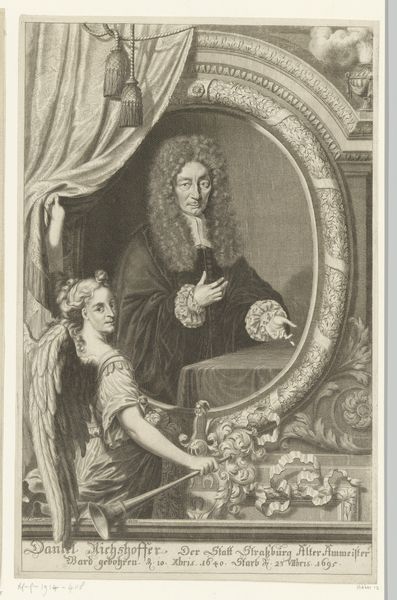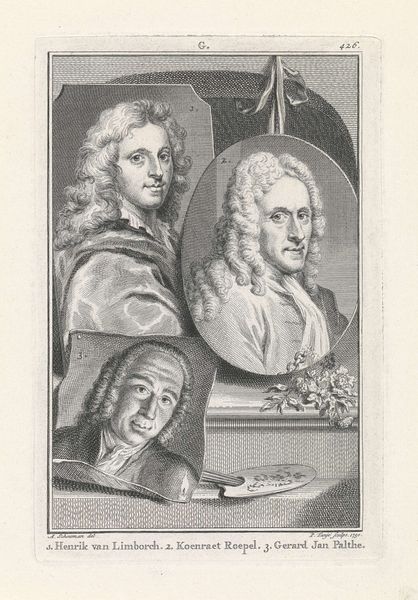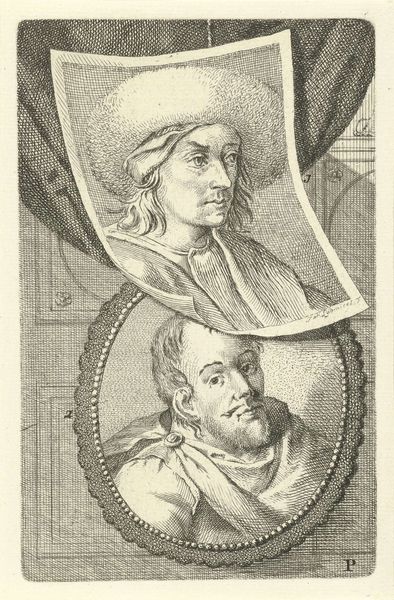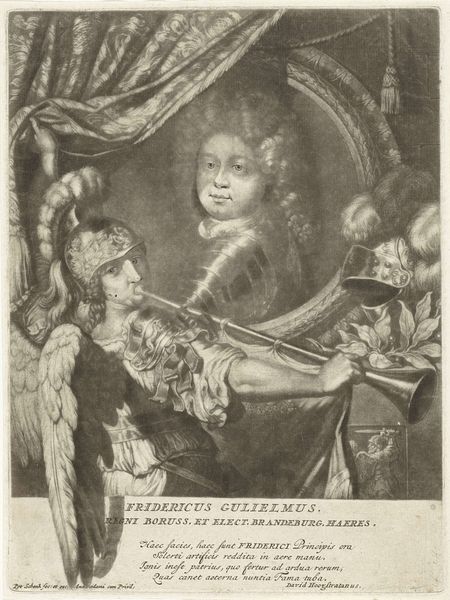
engraving
#
portrait
#
pencil drawn
#
baroque
#
portrait drawing
#
history-painting
#
academic-art
#
engraving
Dimensions: height 151 mm, width 93 mm
Copyright: Rijks Museum: Open Domain
Curator: Before us is "Bustes van Gerard de Lairesse en Albert Flamen", an engraving created in 1721 by Jacob Houbraken, held here at the Rijksmuseum. Editor: It's immediately striking. The textures created simply through line work, the almost overwhelming density of detail. Curator: Indeed. Houbraken, known primarily as a biographer of Dutch Golden Age painters, was also a skilled engraver. This piece showcases his technical ability and the value placed on artistry during this period. We see two busts, set upon elaborate plinths adorned with decorative elements. The medium of engraving itself speaks to a growing print culture, disseminating images widely and contributing to the construction of artistic reputations. Editor: I am especially intrigued by the artist's attention to detail in capturing the subjects' garments, the heavy drapery cascading behind them, the curls of the wig on the right bust, and even the pages from a sketchbook below, each crafted from simple lines. Curator: The presence of the sketchbook, palette, and other tools hints at the creative professions of Lairesse and Flamen themselves, embedding them in a narrative of production. Houbraken wasn't simply replicating likenesses, he was contextualizing them as producers within a particular economic and social system. Editor: Yes, I see how those visual clues deepen the sense of context. The engraving technique creates a striking visual presence that adds complexity beyond pure portraiture, a certain grandeur is established in the process of memorializing artistic legacies. Curator: Think about who was buying these prints and why, they offered accessibility. Owning an engraving of Lairesse or Flamen was a statement, an act of participation in a specific artistic community and discourse. It offered a sense of closeness to famous figures that may have previously been unreachable. Editor: So, beyond pure aesthetic admiration, owning a print like this placed someone within a specific social network. Curator: Exactly. By investing in art and the images that reproduce art, they were simultaneously consuming the products of cultural labor and helping support the system. Editor: Looking at it from my perspective, it's compelling how Houbraken masterfully manipulates linear patterns to portray form, texture, and even social identity within the conventions of baroque aesthetic ideals. The image creates a micro-universe using solely line-work. Curator: A convergence of form and function— the materiality of the print serves a purpose beyond mere visual representation. Editor: Indeed. The more we analyze, the richer the layers of history and purpose seem to appear in the engraving before us.
Comments
No comments
Be the first to comment and join the conversation on the ultimate creative platform.
